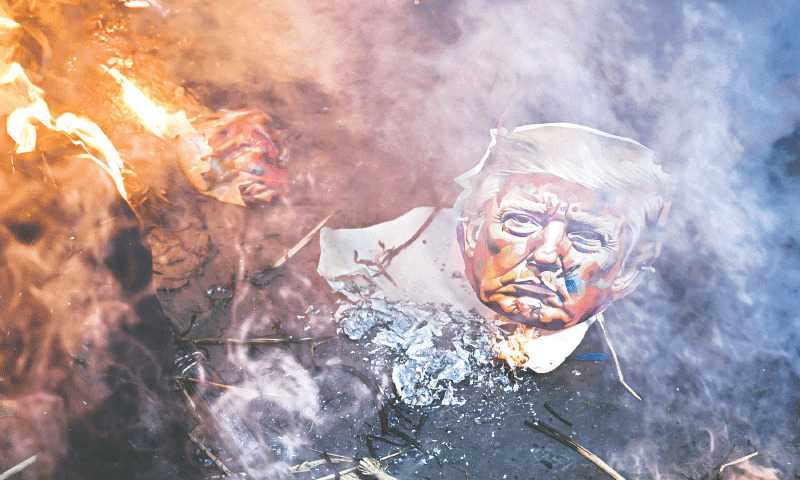Gaming — UK’s superpower
The arrival of “Grand Theft Auto VI” in 2026 will be less a video-game release than a cultural moment. The game, which has players stealing cars, selling drugs and killing cops, will have cost upwards of $2bn to build. Yet it will almost certainly turn a profit within its first week. With its glitzy cityscapes, radio soundtrack and trademark swagger, the series looks, sounds and feels like a warped parody of America. However, this blockbuster began its life in the small Scottish city of Dundee and is still made by a team of tartan nerds in Edinburgh — a feat celebrated in the British government’s strategy for the creative industries, released in June. Gaming has long been a British superpower. The sector generates annual revenues of some $200bn globally. Recognition of the industry in the country is overdue, as British ingenuity also makes it well-placed to thrive in the age of AI.
(Adapted from “Britain Is A Global Gaming Superpower,” published on August 12th, 2025, by The Economist)
Flying private
When Maxx Chewning sold his sour-candy business to Hershey for $75.5m, the first thing he did —before buying a Rolex or dream home — was jet his wife and six friends to Vail on a Dassault Falcon 900. They skipped security lines, zipped straight to the runway and seated themselves in leather recliners with gold accents in the wood-panelled cabin. The price tag for this adventure: $100,000. The ultrawealthy have always enjoyed flying private. That exclusive club is growing, as soaring stocks and crypto prices mint more millionaires and billionaires, who now have a range of choices to book a seat on a jet. Flying private has become the ultimate luxury splurge for many wealthy individuals, surpassing Ferraris, Hermès Birkin bags, topping $14,000 or even waterfront Hamptons homes. For many of those aspiring to join the ranks of the truly rich, having “private-jet money” is the new goal, dividing the 1pc from the 0.1pc.
(Adapted from “How Flying On A Private Jet Became The No. 1 Marker Of Real Wealth,” by Gunjan Banerji, published on August 3rd, 2025, by the Wall Street Journal)
Cold job searches
Job seekers are out in the cold this summer. Especially the ones who have been hunting for a while. Beyond the headline-grabbing top-line numbers in the jobs report for July was another striking piece of data: The number of people unemployed for at least 27 weeks topped 1.8m, the highest level since 2017, not counting the pandemic’s unemployment surge. The median length of unemployment in the US has also ticked up, from a seasonally adjusted 9.5 weeks in July 2024 to 10.2 weeks last month. This job-hunting struggle highlights a significant undercurrent in a labour market jolted by tariff uncertainty and cautious businesses. The latest numbers show job growth has been sluggish for months. While the unemployment rate, at 4.2pc, remains low by historical standards, companies aren’t hiring much. Sentiment among people looking for work has plunged. Data from LinkedIn shows job seekers are more pessimistic about their ability to find a job than they were in April 2020, when the pandemic was taking off.
(Adapted from “Unemployed Americans Endure Longer Job Searches In A Cooling Market,” by Te-Ping Chen and Harriet Torry, published on August 2nd, 2025, by the Wall Street Journal)
A ‘beef’ with India
Donald Trump has beef with India for buying oil from Russia. But the American president’s tariffs totalling 50pc on many Indian exports — set to come into force later this month — are not just about geopolitics. Agriculture, dairy and the farming sector have been the most contentious issues in India’s talks with America, which have broken down. For Hindu-nationalist politicians like Narendra Modi, the dairy industry has particular importance. It is also a source of national pride, as India is the world’s biggest milk producer. “India will never compromise on the well-being of its farmers, dairy and fishermen,” he thundered in Delhi on August 7th, a day after Mr Trump’s announcement. Yet, from the point of view of India’s trading partners, notably America, the industry seems to sum up all that is wrong with the country.
(Adapted from “Cow’s Milk, As Well As Russian Oil, Fuels The US-India Trade War,” published on August 11th, 2025, by The Economist)
Published in Dawn, The Business and Finance Weekly, August 18th, 2025
